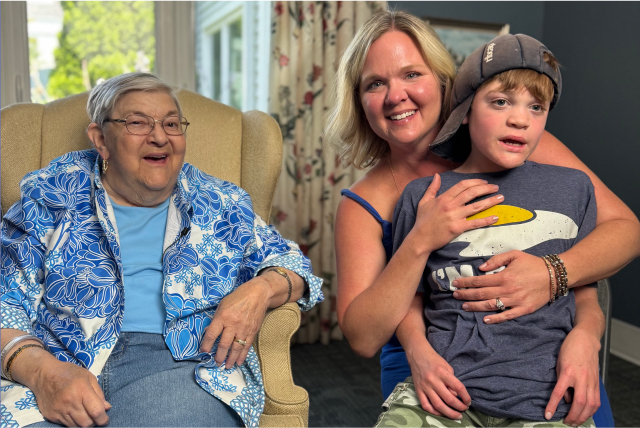Announcing Our Newest Grant Awardees: Fueling Progress in Promising Therapies of Free Sialic Acid Storage Disorder (FSASD)
Thank you to all who supported this effort.

We’re excited to introduce the recipients of the Translational Science Grant, a grant initiative designed to support translational research on promising therapies for Free Sialic Acid Storage Disorder (FSASD). These two projects, both one year in length, are directly funded by our generous global donor community. Projects have been reviewed for scientific merit by the STAR Foundation Scientific Advisory Board and approved for funding by STAR’s Board of Directors.
Meet the 2025 Awardees

Using slc17a5 Zebrafish Mutants as a Platform to Screen Therapeutic Candidates
Lead Researcher: Heather Flanagan-Steet, PhD
Location: JC Self Research Institute, Greenwood Genetic Center, Greenwood, South Carolina, USA https://ggc.org/
Free Sialic Acid Storage Disorders (FSASD) comprise a group of rare disorders caused by mutations in the SLC17A5 gene. Genetic variants that compromise SLC17A5 cause a sugar molecule (sialic acid) to accumulate in a compartment of the cell called the lysosome. The FSASD are associated with developmental delay, seizure, and progressive neurodegeneration. The research team developed two different slc17a55 deficient zebrafish lines. These animals have a robust swim defect that will be used as the basis to screen candidate small molecules (drugs) for therapeutic potential. Two FDA approved drugs (currently used to treat other diseases, but that could potentially be “repurposed” to treat FSASD) will be investigated, with the insight gained leverage to streamline future pre-clinical studies in mammals.
Why zebrafish?
Visit the The Hazel and Bill Allin Aquaculture Facility’s webpage to learn more about the use of zebrafish in genetic research:
https://ggc.org/hazel-and-bill-allin-aquaculture-facility
____________________________________________________________________________

Evaluation of clemastine fumarate for treatment of Free Sialic Acid Storage Disease using the Slc17a5R39C mouse model
Lead researchers: Forbes D. Porter MD, PhD, Cristin Davidson, PhD
Location: Division of Translational Medicine, Eunice Kennedy Shriver National Institute of Child Health and Human Development, National Institutes of Health, Bethesda Maryland USA
Free Sialic Acid Storage Disease (FSASD) is an ultrarare, inherited metabolic disorder characterized by neurodegeneration and shortened life expectancy. Because there are no treatments for FSASD individuals, high priority has been placed on compound evaluation to mitigate disease burden. One well-documented pathological feature of FSASD is hypomyelination in the central nervous system. Myelination is critical to proper functioning of nerve cells and a reduction in myelination, such as with FSASD, has profound consequences on movement and cognition. Clemastine fumarate is a regulatory approved antihistamine that has also been shown to have pro-myelinating effects in several different conditions, including another lysosomal disorder, Krabbe disease. Due to clemastine fumarate’s impact on myelination, we hypothesize that treatment of an FSASD mouse model with this drug will provide disease amelioration.
Slc17a5R39C C57Bl/6J mice will be administered clemastine fumarate starting at 7 days of age, a few days prior to initiation of myelination in the central nervous system of mice. Slc17a5R39C C57Bl/6J mice injected with clemastine fumarate or vehicle, along with littermate controls, will be evaluated for changes in motor function, cognition, and survival. Biomarker and neuropathology assessments will substantiate phenotypic findings. Amelioration of hypomyelination in FSASD mice following clemastine fumarate treatment will highlight an aspect of disease pathology amenable to intervention and pave the way for evaluation of other pro-myelinating compounds. Importantly, benefits observed in an FSASD mouse model will support a Bench to Bedside grant should additional preclinical data be necessary, with the ultimate goal of initiating a clinical trial in FSASD individuals.

____________________________________________________________________________
We’re proud to support these innovative efforts and can’t wait to see where these breakthroughs will lead!
Thank you to everyone who applied, to our reviewers who lent their expertise, and to our supporters who make this work possible. The future is brighter because of your belief in what’s possible.




